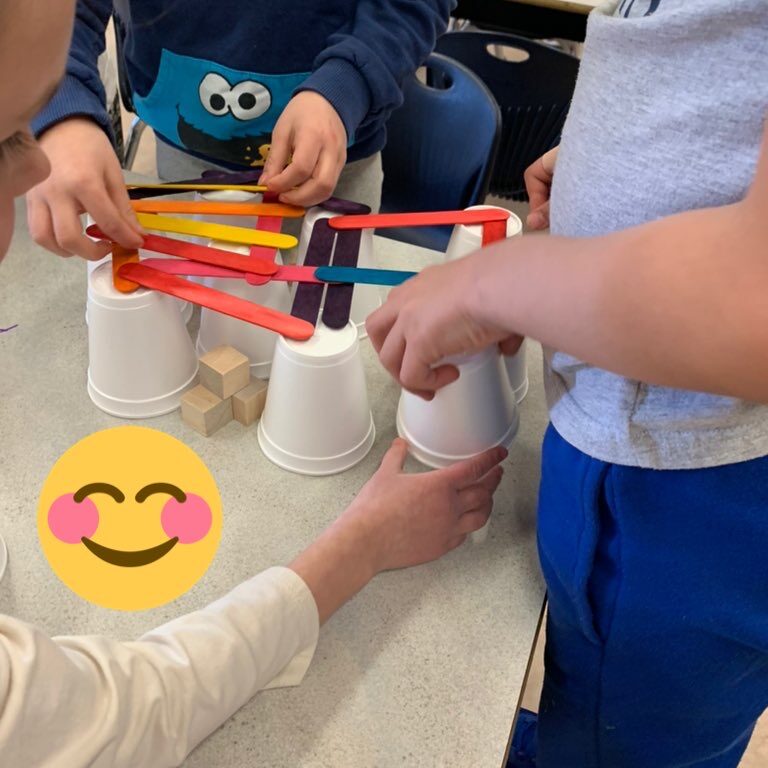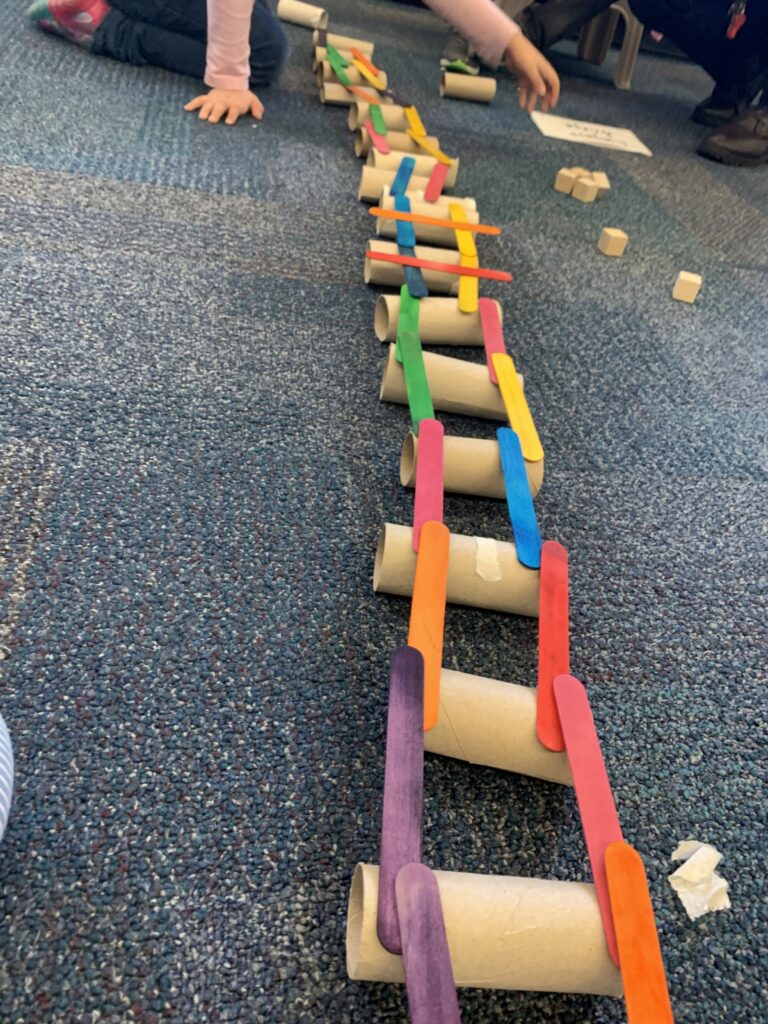On the second week of my practicum, my coaching teacher suggested that I teach a STEM lesson with an ADST focus. I agreed as I thought the STEM challenge would ignite a sense of fun and natural curiosity. I also looked forward to using a team challenge to promote cooperation and competition between the young learners. At the time of this discussion, I had been observing the classroom for a few weeks. I was fascinated by and learned so much from watching the young learner’s thinking and problem solving, especially during STEM lessons. I observed that most of the time the students worked independently on each STEM box. That led me to think a group STEM Challenge would promote the articulation and sharing of ideas. The class was high energy, and I designed the STEM lesson to involve movement and action through the rotation of students from station to station.

I investigated the definition of STEM and the philosophy behind it. STEM-based education teaches children more than science and mathematical concepts. The focus on hands-on learning with real-world applications helps develop a variety of skill sets, including creativity and 21st-century skills such as effective communication and cooperation. STEM education includes problem solving, critical thinking, creativity, curiosity, decision making, leadership, entrepreneurship, acceptance of failure and more. Regardless of the future career paths considered by these students, the STEM skill sets go a long way to preparing them to be innovative, and with innovation comes curiosity and agency.

I also considered STEM activities that had not done before in my class. I had a really great coaching teacher who prepared over 20 different STEM boxes for the students to play with. So, I needed to get really creative with my lesson planning. A few days before the lesson, one of my own children was playing with toilet paper rolls and boxes. An “Aha moment” appeared. Toilet paper rolls and popsicle sticks are common, recyclable materials and students of any level of learning will feel comfortable and even successful when creating with them. For my lesson, I divided the class into four groups; I had four stations for the challenge: the Longest Bridge, the Strongest Bridge, the Tallest Building and the Strongest Building. Students spent 15 minutes at each station before I signalled to them that it was time to change.
Again, one of this STEM Challenge’s benefits is the group work. I put students in groups of 4 to 5 based on preassessments for learning congruity. Working in small groups, the young learners build up the core competencies of communication with teammates and collaboration actions that make the best use the group’s strategies. Also, the STEM challenge gave students a strong tool to for creative thinking and reflection on their thinking, planning, and execution of the task. I encouraged the students to think outside the box: if something does not work out, it is OKAY. Rethinking a better idea to complete the challenge is possibly the best way to show that improvement and eventual success comes with practice, failure, and a lot of trial and error. By working in a group, the students had each other to use for idea generation, confidence building, and shared responsibility for the final products.

I wanted to showcase how a STEM challenge could use simple materials and still be creative and create something incredible, in the same way that Igloos—made from block of ices and Teepees–made from wooden poles and sewn hides—use natural materials to create homes. I used these examples to apply FPPL into the lesson: Learning is holistic, reflexive, reflective, experiential, and relational (focused on connectedness, on reciprocal relationships, and a sense of place). Through the STEM challenge, I attempted to show the students how to experiment with new ideas and collaborate with teammates to create successful strategies. Learning about how people connect and build thing is not just for fun; it has meaning that could keep a family safe and survive in an accident with extreme weather conditions. The skills can be translated to any situation where ingenuity is applied to using common materials to make something strong and useful.
Reference
https://www.invent.org/blog/trends-stem/value-stem-education